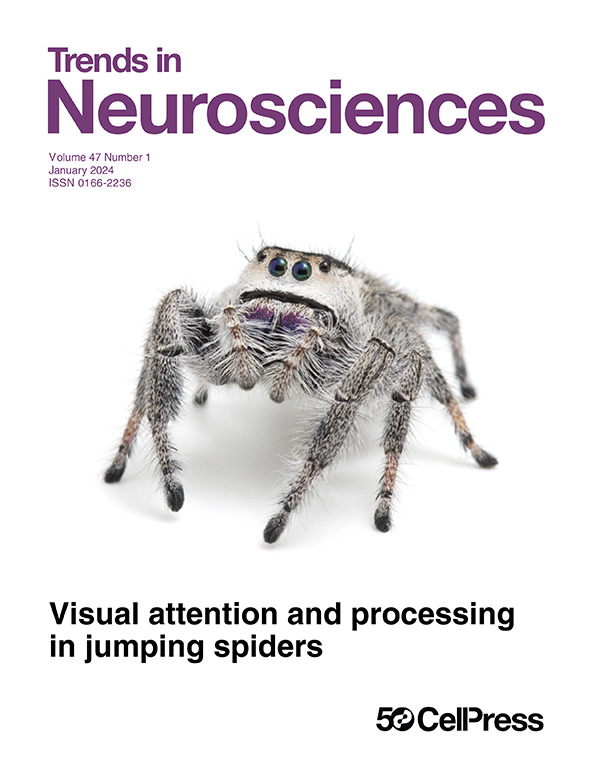[11C]ER176 images brain inflammation across TSPO genotypes and colocalizes with tau.
IF 15.1
1区 医学
Q1 NEUROSCIENCES
引用次数: 0
Abstract
Accurately measuring brain inflammation in Alzheimer's disease (AD) is crucial due to the role of inflammatory processes in neurodegeneration. In a recent study, Appleton, Finn, et al. used [11C]ER176, a novel translocator protein 18 kDa (TSPO)-positron emission tomography (PET) tracer overcoming genotype-related binding issues, to show increased inflammation in early-onset AD, with patterns aligning more closely with tau pathology than amyloid deposition or atrophy.
[11]ER176在TSPO基因型中与tau共定位的脑炎症图像。
由于炎症过程在神经变性中的作用,准确测量阿尔茨海默病(AD)的脑部炎症至关重要。在最近的一项研究中,Appleton、Finn 等人利用新型转运蛋白 18 kDa(TSPO)--正电子发射断层扫描(PET)示踪剂 [11C]ER176 克服了基因型相关的结合问题,显示了早发性 AD 中炎症的增加,其模式与 tau 病理学的关系比淀粉样蛋白沉积或萎缩更为密切。
本文章由计算机程序翻译,如有差异,请以英文原文为准。
求助全文
约1分钟内获得全文
求助全文
来源期刊

Trends in Neurosciences
医学-神经科学
CiteScore
26.50
自引率
1.30%
发文量
123
审稿时长
6-12 weeks
期刊介绍:
For over four decades, Trends in Neurosciences (TINS) has been a prominent source of inspiring reviews and commentaries across all disciplines of neuroscience. TINS is a monthly, peer-reviewed journal, and its articles are curated by the Editor and authored by leading researchers in their respective fields. The journal communicates exciting advances in brain research, serves as a voice for the global neuroscience community, and highlights the contribution of neuroscientific research to medicine and society.
 求助内容:
求助内容: 应助结果提醒方式:
应助结果提醒方式:


